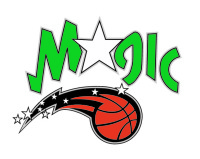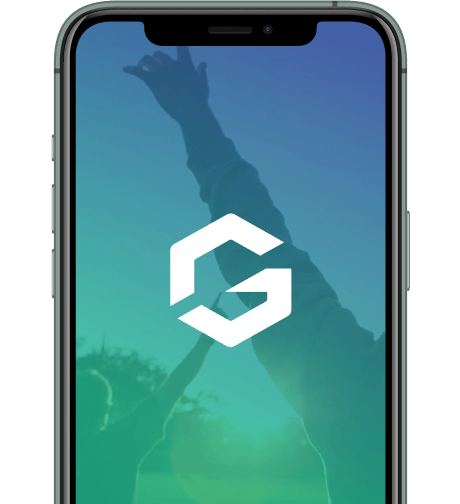Health & Nutrition
NUTRITION, HYDRATION & INJURIES
HYDRATION
Loss of 1-2% hydration (1 li of fluid per hour for a 60kg athlete) WILL reduce performance, recovery and skills. Fluids are needed to take away heat to minimise tiredness.
Before the game/training
2 metric cups (500ml) spread out over the 2 hours before a game or training. This will fully hydrate your body before the game.
During the game- NOT LESS than 250ml every 15 minutes. This means 1 litre per hour. A single 750 ml ‘guzzler’ is not enough. Bring 2 guzzlers or get a 1 litre bottle.
Our club policy is no drink bottle, no training or game. A drink bottle is more important that sports shoes. With the removal of the Drinks Fountain at the TRC, proper hydration must be considered by familes. Coaches might like to consider bringing a couple of disposable cups and a 2 litre bottle of (preferably rain) water to training for the inevitable “I forgot my bottle”, instead of saying “phone home, you are out of here”.
Ingested liquids take time to get from the stomach to the body, so drink consumption must be regular during exercise.
Following the game- 500ml.
Sports drinks- These contain sodium, potassium and electrolytes. For a 1-2 hour training or game, water is adequate. If attending a carnival where players may have 3 games in a day, sports drinks are a good option for use between games. During games use plain water, as sports drinks may cause vomiting during active sport (we know that is not what the adverts say, but it is a fact). Players (particularly the U10 and U12 players who are most at risk as their body does not shed excess heat as well as older players) will drink more of a flavoured drink than they will water, so consider adding cordial syrup- avoid rasberry. When the coach says 'have a drink' a response of 'I'm not thirsty' is not acceptable.
For Carnivals in hot weather, additional salt should be taken- see later under 'Sodium'.
Very obviously, no carbonated drinks before during or after a game. No caffeine drinks in the 2 hours before or 2 hours after a training or game.
'Energy Drinks'. Use of these by athletes is actively discouraged by our club. Based on information supplied by the Australian Sports Institute, the formulation of most popular 'energy drinks' actually inhibits athletic performance due to caffeine and other ingredients, despite what the adverts say.
Players and parents- hydration tests
Weigh loss- weigh the player before and after exercise. The difference is the amount of fluid lost. Increase fluid consumption by that amount.
The “Wee Test”. If an athlete has very pale coloured urine they are properly hydrated. It is medium/dark, they are improperly hydrated. The teams that I have coached, particularly girls, find this recommendation very amusing. It is in fact very important.
SODIUM
Players who are sweating need salt. This can be provided in their diet, by salt tablets or ingestion of powdered salt (not as good) or sports drinks. If you have cramps, particularly full-body cramps, feel ill or feel like vomiting after exercise TAKE SALT. This is particularly the case in hot and humid weather. Excessive salt consumption is a problem with adults, but a small sprinkle of a couple of grams- ie 1 pinch (a gram is about the size of a grain of rice) of salt on food (preferred method of ingestion as swollowing a salt tablet on an empty stomach may cause vomiting with subsequent exercise) as a prophylactic measure is unlikely to be detrimental to junior athletes. It is better to avoid the problem than fix it when it occurs.
PROTEINS
Builds body power and strength, build muscles.
Eating protein after exercise, particularly when taken with carbohydrates, reduces the rate of muscle protein breakdown caused by exercise.
Protein requirements. For basketball training and playing once a week, approx 1 gram of protein per kg of body weight a day. It is recommended not more than 2gm/kg/d. For a 75 kg basketball this is 130 grams of protein. Do your own maths for your bodyweight.
Protein
- 100gm of lean red meat, or 150gm of (skinless) chicken or fish- 30gm protein. White meat has less protein than red meat.
- Glass of milk (preferably low fat) /tub of yoghurt – 11gm
- 2 thin slices of bread 6 gm.
- 60g of nuts or 150 g of legumes- 10gm.
- 100g of cooked spaghetti/pasta- 5 gm
- 2 Vitabrits- 4gm
1 egg- 6gm- yolk 2.6 (note some fat content, but not too bad) and white 3.6.
FAT
Fat is essential is small amounts. A home-made bread/meat roll with salad is likely to have say 1 teaspoon of fat (mainly in the margarine/butter and mayo). A McDonald’s Burger and small fries has 12 spoonfuls (not grams) of fat. Pizza, KFC and Red Rooster fried chicken is even worse. Look at the nutritional information the vendor supplies- if they don’t supply nutritional information ask them why.
Our sponsor, Subway Nuriootpa, offers healthy low-fat alternatives- which is why we approached them.
Fat consumed should be unsaturated fat, and intake of saturated fat should be limited (the nutritionalists say that amongst other problems it prevents each body cell from functioning properly).
IRON
This is important, particularly for female athletes. Lean red meet should be eaten 3-4 times a week to avoid anaemia. Female athletes who are pale skinned or tired should seek medical advice. Female youths/women who are menstruating should eat more red meat to replace lost blood. Increase consumption of Vitamin C. Limit intake of caffeine- tea/coffee/caffeine drinks (including cola drinks).
Vegetarians should seek advice from a dietician. A suitable vegetarian diet for athletes is possible, but does require specialist knowledge.
VITAMINS
Your diet should provide adequate vitamins/minerals without supplement tablets, if you eat adequate vegetables and 1 piece of fruit a day. If your diet ‘sucks’, consider tablet supplements.
AND FOR THE BIG “C”- CARBOHYRATES
After hydration, Carbohydrates are the most important thing that a coach will be worried about in his/her players.
Low fat, high carbohydrates. Low GI food before the game (fruit/low fat yoghurt, raisin bread, apple muffins. cakes), High GI during and after afterwards. Eat a high carb food 1-2 hours before the game. Eg 2 slices of bread with jam/honey. Sugar. Eat jelly beans/snakes etc. at each quarter break. Rice crackers are a great source of high GI food.
Recovery Food
Snacks and fluid within 30 minutes of finishing exercise. High in carbohydrate, low protein. Put snacks in the player’s kit bag for during and after the game.
High GI Snack- post training and game. Fruit (watermelon, dates), sandwiches with low fat cheese, sports drinks, toast, muffins, scones, etc, crumpets with honey. Rice or corn thins with salad/vegemite and cheese, Energy bars or Roll-ups.
Summary
6 meals a day.
High CHO diet
Plenty of fluids
Never miss a meal
Eat before and after training or game.
INJURIES
Prevention
Proper warning up/ stretches (before and after exercise). Protective equipment. Managing Existing Conditions- talk to your coach and have him/her talk to your doctor. Environmental factors- heat and cold. Illness & known medical conditions- talk to your coach and have him/her talk to your doctor. Use common sense.
What if an Injury occurs
Stop the game
Talk
Observe
Prevent further injury.
Continuation of the game by the player should be the last priority.
Sprains
The most common injuries in basketball are finger, ankle and knee injuries.
Finger injuries. If a finger is out of alignment, it is either dislocated or broken. Neither should be treated other than by a doctor or qualified health professional. A second or third degree dislocation (or any break) requires prompt medical treatment. A sore finger may be taped and the player continue. A dislocated or broken finger means an immediate trip to the doctor or hospital- with no resumption of play. UNQUALIFED PEOPLE SHOULD NOT TRY TO PUT IN BACK IN JOINT.
Ankle Injury- a rolled ankle use RICER- see later. Must not return to Court.
Knee injuries- use RICER-. Must not return to Court.
A ‘corkie’- bruising close to the bone- seek medical advice as soon as possible. Not to return to Court.
Eye injuries- any bleeding to the eye, either to the white of the eye or to the cornea should be treated by covering both eyes and an immediate trip to hospital. Loss of vision is a serious risk. Usual stay in hospital is 1 week. A soft tissue “shiner” may not require treatment.
Asthmatics. They should carry their own medication. Coaches are encouraged to carry a puffer of Ventolin/Generic Equivalent. BVABA has a puffer in its office. In the case of a severe asthma attack, you have three minutes to prevent death. If you think the ambulance can get there in 3 minutes, good luck!
Diabetics. Coaches must know whether their team has a diabetic, and acquaint themselves in conjunction with the family and their doctor of appropriate procedures.
Allergies- these, and appropriate treatment need to be disclosed to the coach by the player/family.
Concussion. Any blow to the head is of concern. Look for unconsciousness (even a few seconds), amnesia (loss of memory), disorientation or confusion, drowsy/headaches, dizzy, nausea, slow reaction time, unusual aggression, visual impairment. If any are present the coach must not permit the player to return to the Court and should insist that medical advice be obtained urgently.
SOFT TISSUE INJURY MANAGEMENT (RICER)
- Rest- stop activity.
- Ice
- Compression
- Elevation
- Referral to specialist medical advice.
All Barossa Magic teams have a first aid kit for use at training and a compression bandage. At the Tanunda Rec Centre YMCA have ice packs, and BVABA has several first aid kits in the Basketball Office, in the cupboard on the left of the office. BVABA has requested that the Stadium managers provide bags of ice and a bucket (which BVABA will no doubt have to pay for) to allow proper icing of an injured ankle in water/ice- a rock-hard inflexible ice pack has little practical benefit.
RICER will significantly reduce the extent of long term injury and reduce the recovery time from the injury.
Note that no player who has been iced will be permitted to return to the game- the icing is designed to prevent blood flow to the injured area and that all muscles and ligaments in that area will have contracted- any player returning to the game after icing is at serious risk of injury.
DO NO HARM
Heat- increases bleeding
Alcohol- increases swelling
Running or exercising too soon
Massage- in the first 72 hours increases bleeding & swelling
Again seek specialist advice.
CUTS
- Control bleeding- direct pressure/compression
- Seek medical assistance- stiches should be inserted within 2 hours
- Avoid exercise, alcohol and aspirin- increases bleeding.
TAPING & BRACING
May prevent injury by reducing the range of movement, but may also cause injury in the joint above that being protected. Again, seek specialist medical advice.
© Copywrite Barossa Magic Basketball Club 2009.









